'Calm, beautiful, loving, and intelligent — everything about that dog was pure majesty': The greyhound is Country Life’s first dog breed of the week
From ancient hunting dogs to royal symbols in medieval Britain, greyhounds have captured the hearts of many — including Jilly Cooper and Twiggy.
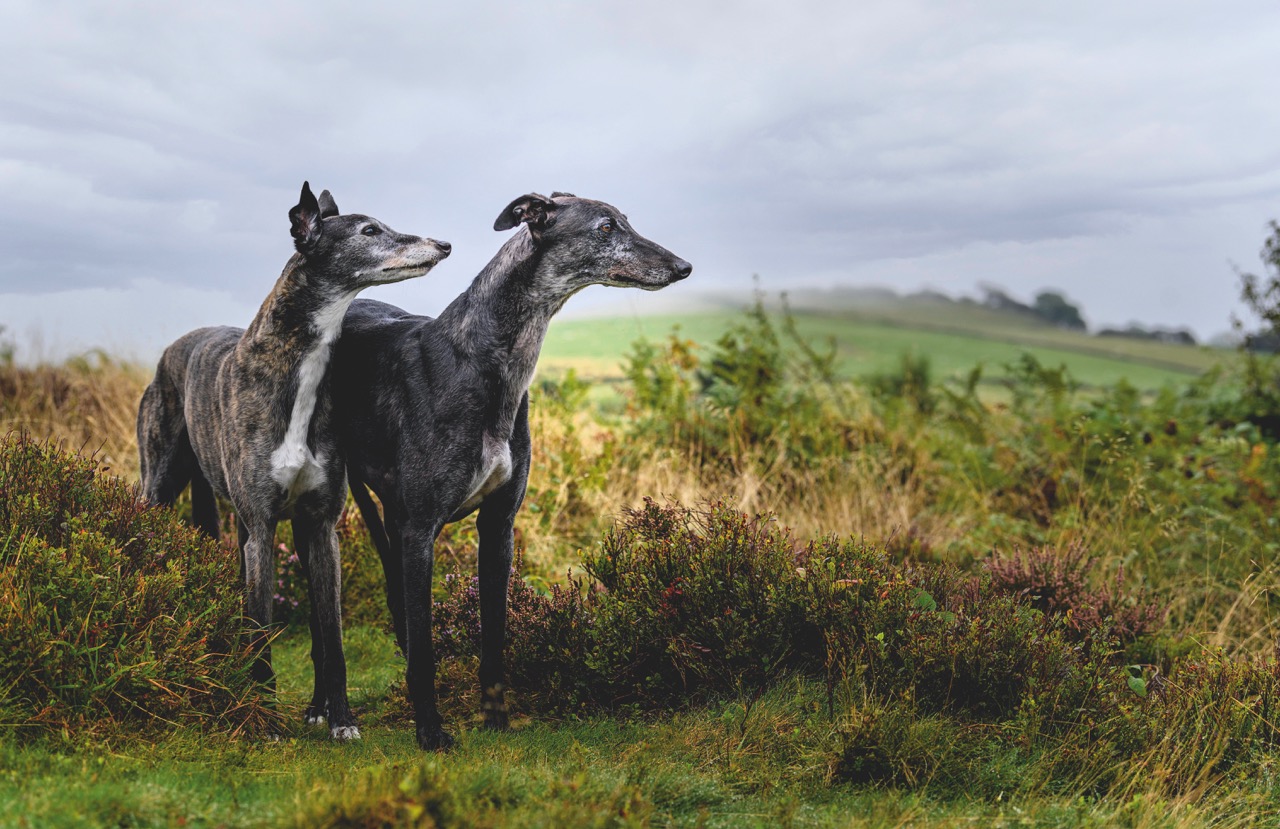

Dame Jilly Cooper is a master at pairing two charismatic characters destined for one another on the page. In real life, however, her matchmaking efforts were often thwarted by another charming, coltish-legged figure: her late greyhound, Bluebell.
‘Whenever I tried to introduce a single man and woman on my sofa, Bluebell would leap between them, wagging her silken hips to separate them,’ she recalls. ‘She was as playful and assertive as Feather was gentle.’ Feather, her first greyhound, was a former racing dog who had been abandoned. ‘When I heard that my beloved lurcher Hero had passed away, Dr. Mary Jane Fox, who rescues greyhounds in Ireland, flew Feather to the Cotswolds to meet me,’ Jilly remembers. ‘On a lovely summer evening, Feather stretched out between us on a sunlit lawn. Suddenly, he rolled over and snuggled against me. That night, the kindest, sweetest dog moved in.’
To ease the heartbreak of losing both, Jilly placed flowers at the bottom of her garden. ‘“In Loving Memory” reads the inscription on their graves: “Bluebell, who will always bloom in my heart,” and Feather, “whose noble heart only failed because he gave so much of it away.”’
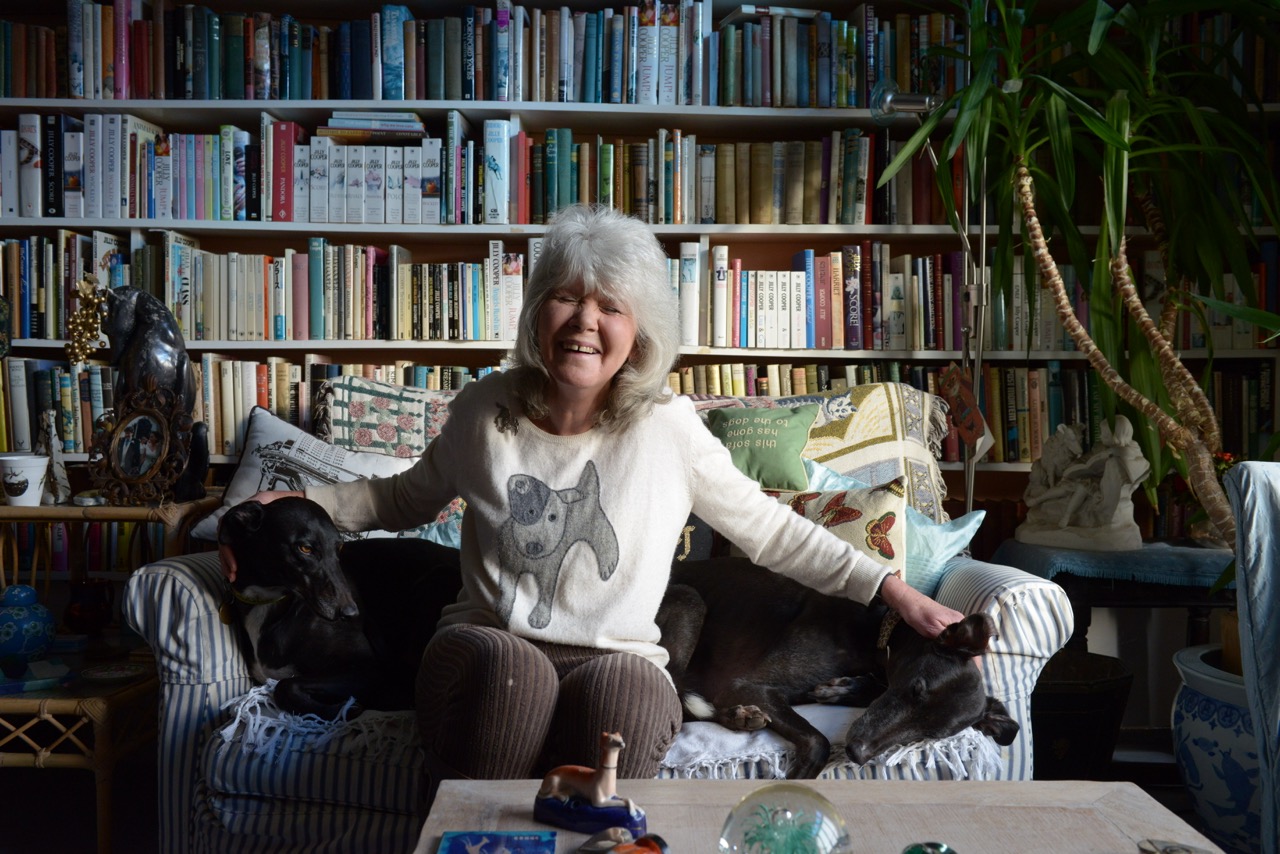
Move over Rupert Campbell-Black — these two are the real loves of Jilly Cooper’s life.
That greyhounds inspire such enduring affection is something bestselling classical artist Russell Watson can attest to. ‘I will never get over losing Blaze,’ he shares of his first greyhound. ‘I met him on a photoshoot for my 2012 album, Anthems, and discovered he was from a shelter—he looked up at me, and that was it. He spent the rest of his life with us. Calm, beautiful, loving, and intelligent—everything about that dog was pure majesty.’
After Blaze’s death, Watson and his wife, Louise, visited Sheffield Retired Greyhounds to walk the residents. ‘They let out the dogs, and this ball of energy came charging at me—the biggest greyhound I’ve ever seen, all muscle. He rested his head on my chest, looked up into my eyes, and I thought: “Oh, no.”’ he laughs. ‘Axel chose me. We brought him home that day.’
Axel now joins the many animals on the Watsons’ farm in Cheshire: four dogs, a cat, a macaw, a South American ostrich, three alpacas, chickens, two Valais blacknose sheep, a miniature horse, and three horses. ‘When we open the door in the morning, Axel sprints into the field at 100 miles per hour, runs around, lounges on the grass if it’s not raining, and then comes straight back to the sofa,’ explains Watson. ‘He joins Louise to muck out the horses; he loves hopping in the car to run errands. When he’s on the lead, he’s so elegant you’d never know how goofy and daft he is. When he runs past you at full pelt, you can feel the wind whoosh by — it’s incredible.’
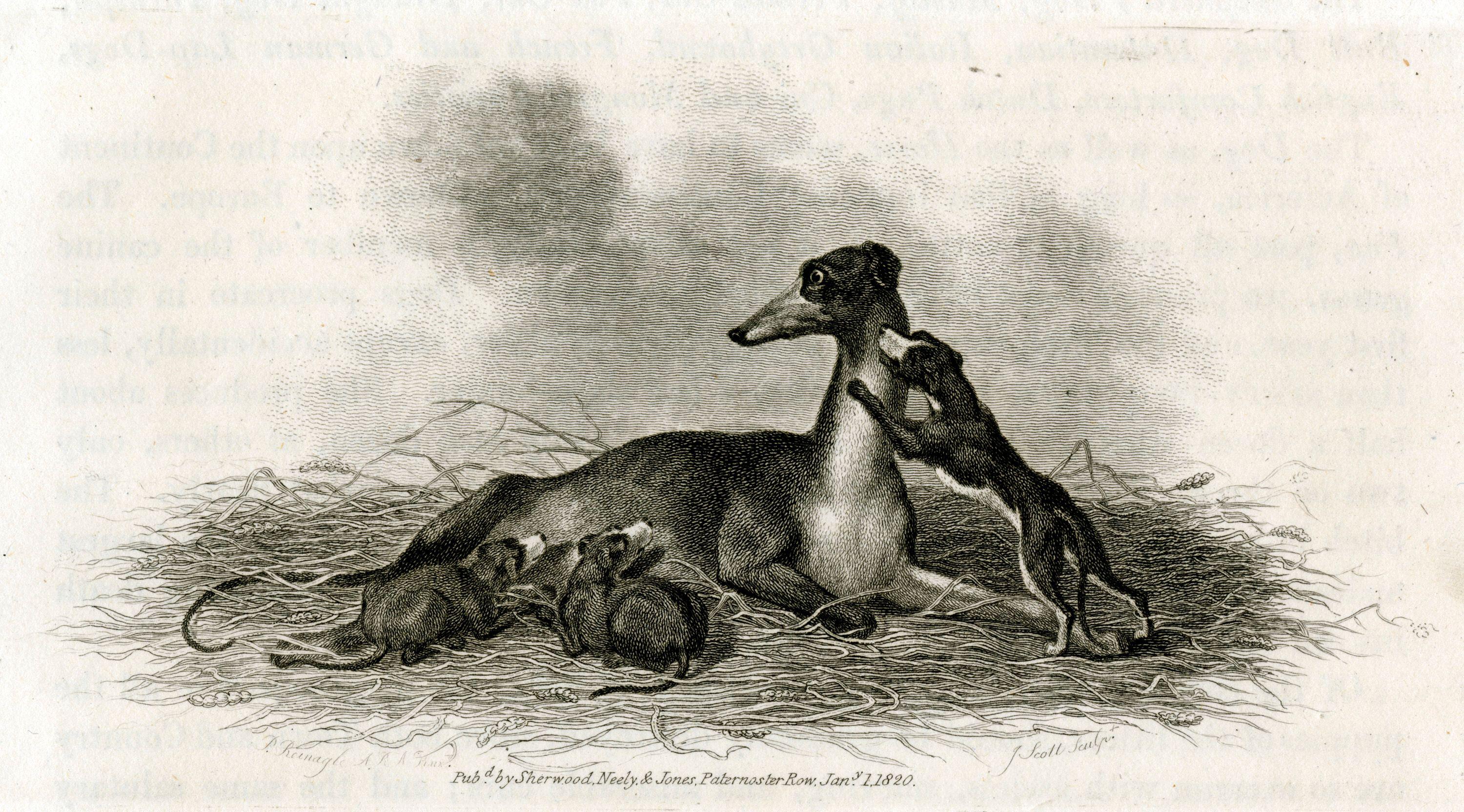
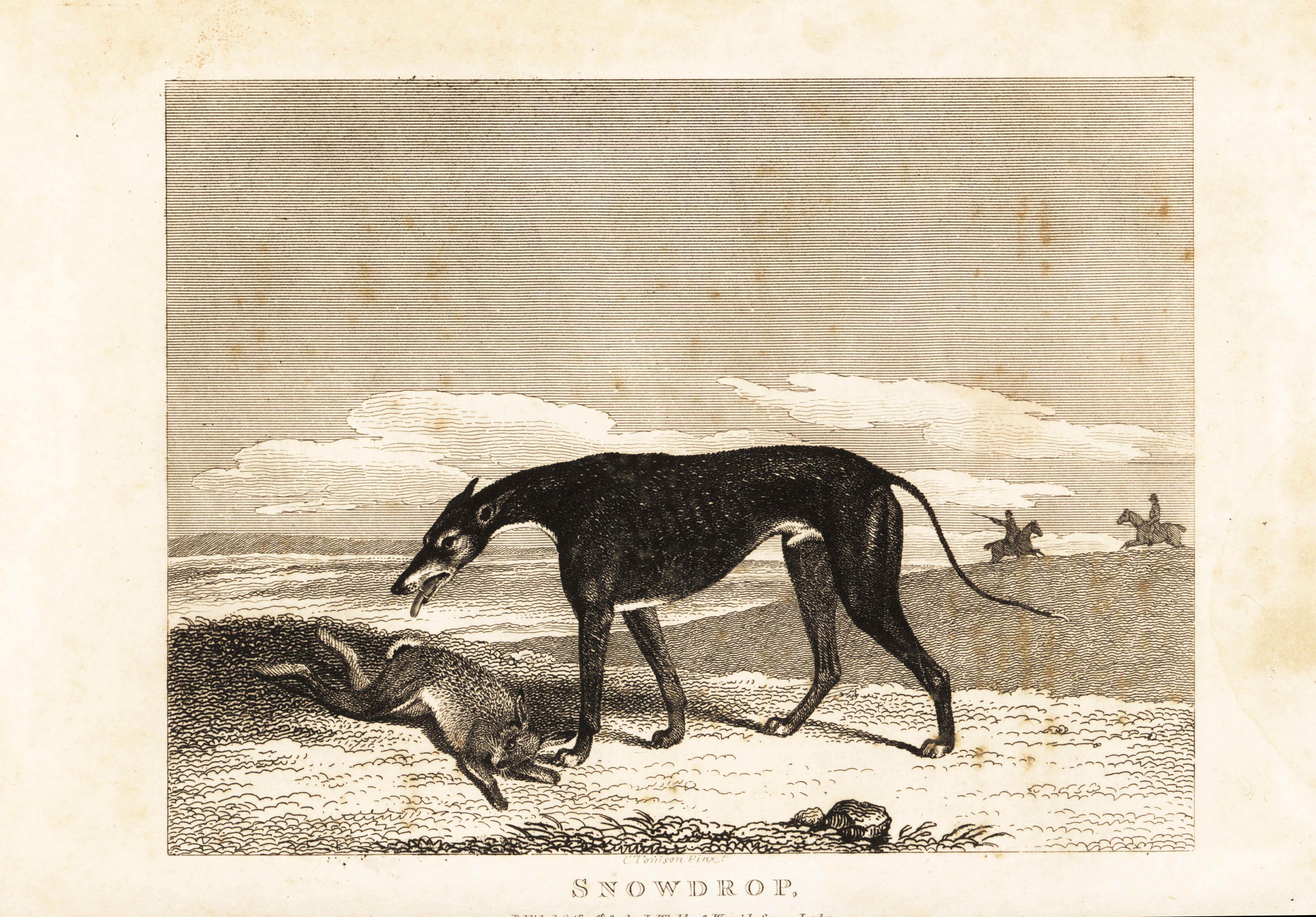
Greyhounds are believed to descend from the desert dogs of the pharaohs and Arabian sheiks — highly valued hunting companions whose likenesses were engraved in Egyptian tombs. Today’s greyhounds still retain a striking resemblance to these ancient dogs — elongated heads, deep chests, muscular and powerful quarters, and long, straight legs — traits that have stood the test of time. No other dog can match the speed and grace of a sighthound in pursuit of its quarry.
These remarkable dogs spread across the globe, eventually reaching Britain, where they were developed to match the speed of the brown hare. As a status symbol, greyhounds were reserved for the upper echelons of society when King Canute inaugurated the Forest Laws in 1014, making them exclusive to the nobility. The greyhound was even featured on the great seal of Edward III and continued to enjoy royal favor throughout the ages. Queen Victoria adored her husband’s ‘sweet and beautiful’ greyhound, Eos.
‘Greyhounds can be a little reticent, but when they give their heart, they mean it,’ says Jo Guise, a trustee of Yarmouth Greyhound Homefinders in Norfolk and the owner of seven-year-old Miss Tuppence. ‘Looking into a greyhound’s big, gentle eyes feels like gazing into their soul. When I meet another greyhound owner, we instantly understand one another — it’s life-affirming.’
Jo notes that greyhounds’ placid temperament makes them ideal for therapy work. ‘Miss Tuppence is one of two therapy dogs at Kelling Hospital in Holt. We also visit a day-care center in Blakeney — she has done amazing work with dementia patients. She’ll approach someone who’s withdrawn and calmly rest her nose by their hand. Their eyes light up, and they start to engage with her. It’s moving to witness.’
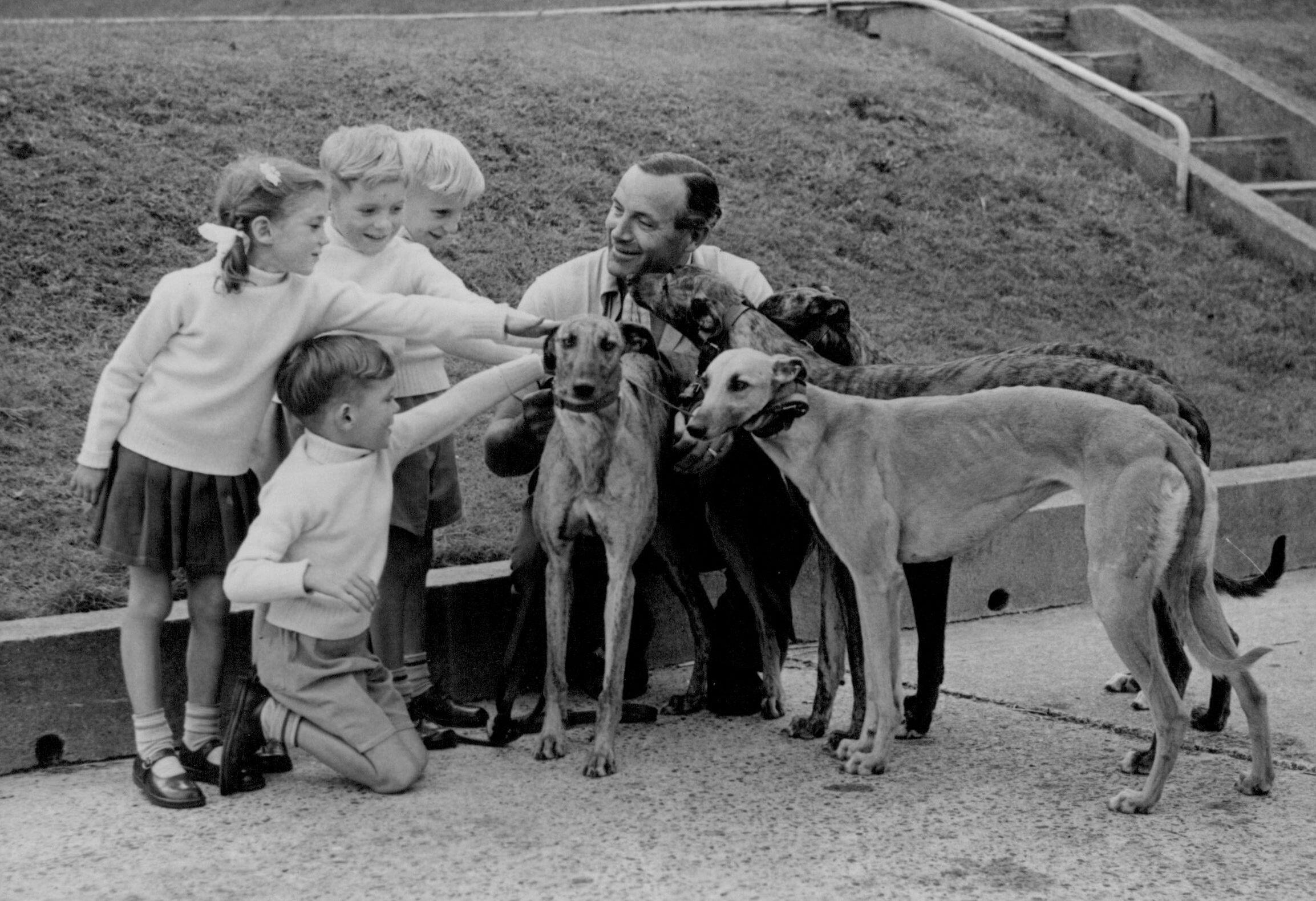
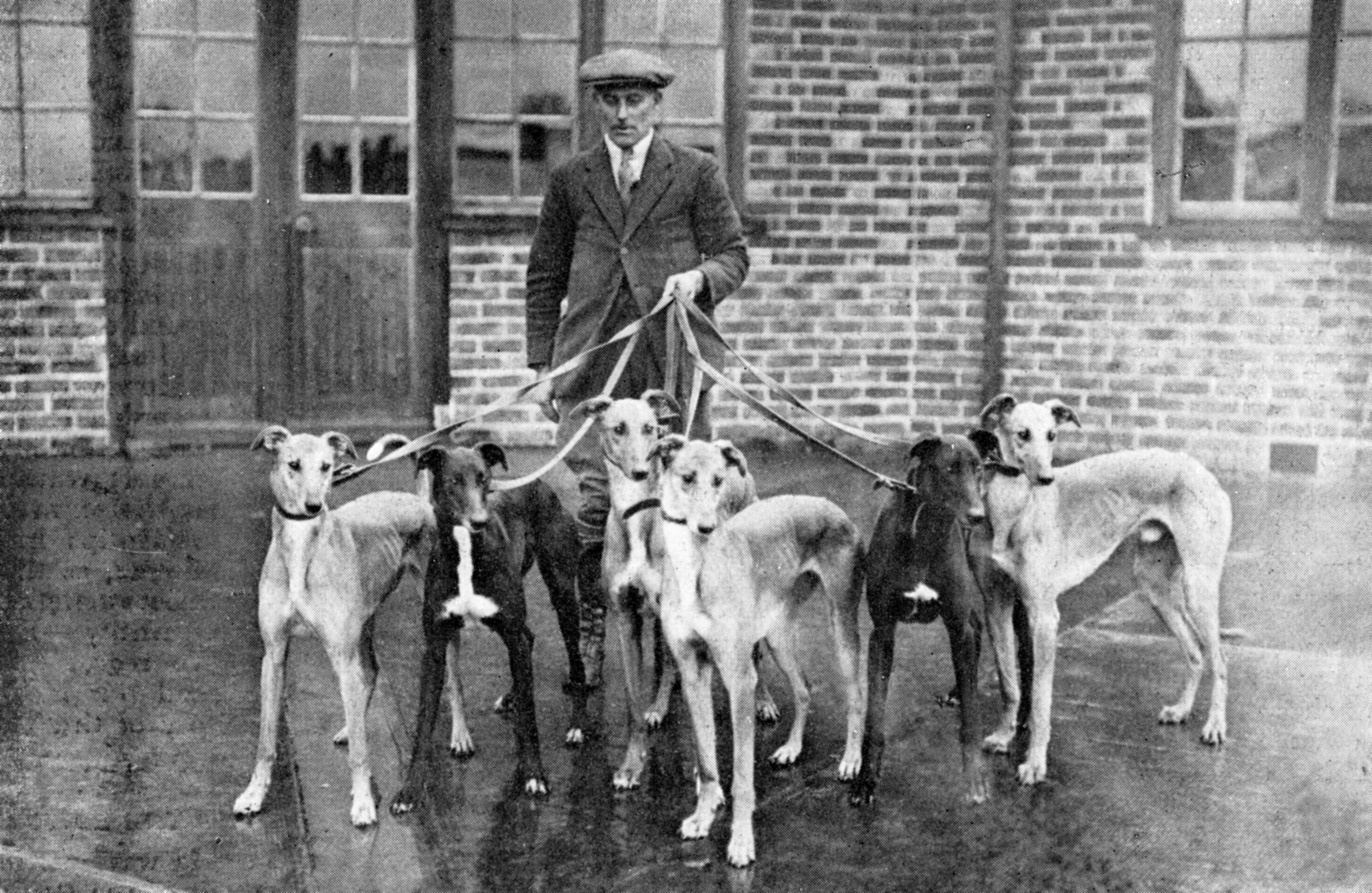
For Hannah Freer, greyhounds’ all-round appeal makes them her dog of choice. ‘They’re up for anything,’ she enthuses about her three ex-racing greyhounds, Tiff, Mira, and Maggie, who live with her on the Nottinghamshire-Leicestershire border. ‘They’ve come with me on hikes around the Peak District, navigating challenging paths and scrambling up rocks. They’ve been to hunt meets, showjumping events, and then happily settle in pubs over lunch and cuddle on the sofa in the evenings.’
Hannah also participates in Canicross, a cross-country sport where a dog is harnessed and attached to the runner by a bungee, and greyhounds prove well-suited for the task. ‘Mira and I have won the Most Improved award for Canicross Midlands this season,’ she shares. ‘She’s one of the only greyhounds there, but she loves it.’
Steve Bennett of the Greyhound Trust fosters greyhounds and emphasizes their adaptability, making them suitable for a variety of homes. ‘They are generally quiet, sleep most of the time, walk well on the lead, and tend to be good with children and people of all ages. They seem to have a sixth sense — if someone is upset, has health problems, or is scared of dogs, they become gentle and understanding. It moves me to tears to see how they adjust to any situation.’
Exquisite houses, the beauty of Nature, and how to get the most from your life, straight to your inbox.
Acknowledging misconceptions about greyhounds, Mr. Bennett notes, ‘Some people assume they need lots of exercise each day, but they don’t. They’re used to short bursts of energy. It’s important to walk them on a lead if they don’t have good recall.’
Model and actress Dame Lesley Lawson — better known as Twiggy — unexpectedly became a greyhound advocate over a decade ago and is now an ambassador for the Greyhound Trust. ‘I didn’t know much about greyhounds, apart from always thinking they were elegant and beautiful,’ she admits. ‘Then, on a visit to my local vet, I saw a notice about two related older greyhounds needing a home. It made me so sad, so I called a journalist friend to see if they’d run a story to find them a home together.’
After spending a day with greyhounds Gracie and Joe on a photoshoot, Twiggy was hooked. ‘They are so very gentle and loving,’ she says. ‘The photos ran in the paper, and a wonderful home was found for them in the countryside, where they lived happily ever after.’
Show a greyhound some love
Share Your Life With a Greyhound
Greyhound Trust
Sheffield Retired Greyhounds
Yarmouth Greyhound Homefinders
This feature originally appeared in the July 23, 2025, issue of Country Life. Click here for more information on how to subscribe
Katy Birchall is a journalist and the author of several young adult and teen novels, including The It Girl series and the Hotel Royale series. She has written a retelling of Jane Austen’s Emma for the Awesomely Austen series and the Netflix spin-off novel Sex Education: The Road Trip. She is also the author of several romantic comedies for adults including The Secret Bridesmaid and The Wedding Season. She writes romantic fiction for young adults under the name Ivy Bailey, romantic-comedy under the name Katrina Logan, and romantic sports fiction for adults under Katherine Reilly. She lives in London with her husband, daughter and rescue dog.
